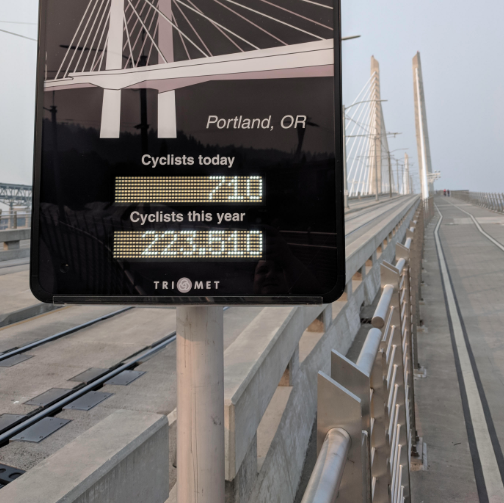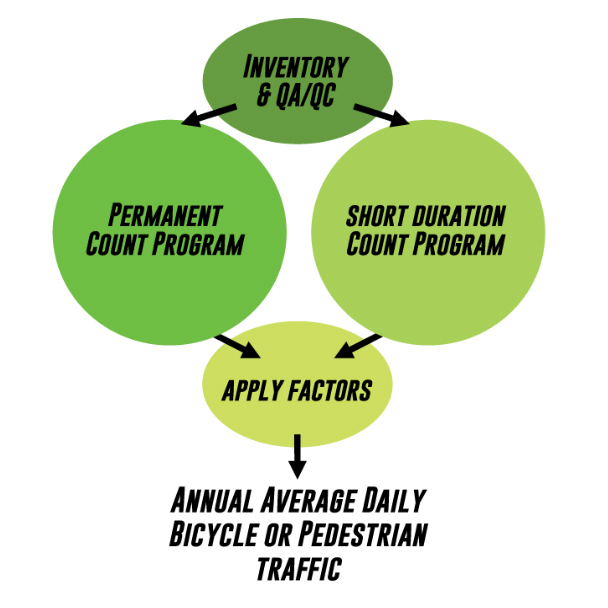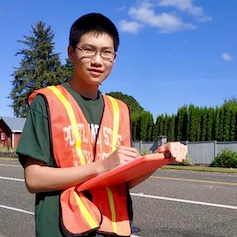Data and Modeling Research
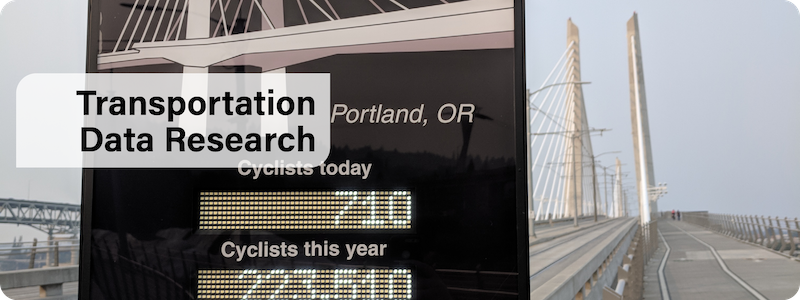
Data-driven policy and strategy are critical to meeting transportation goals. Where there is insufficient or incomplete data, there can be no effective solutions. It’s why at Portland State University we’ve focused our research efforts over the years on filling data gaps, and why we house two national data clearinghouses – PORTAL and BikePed Portal – aimed at making transportation data more easily accessible to researchers and practitioners.
PORTAL: Transportation Data Archive for Portland-Vancouver
PORTAL provides a centralized, electronic database that facilitates the collection, archiving, and sharing of transportation data and information for public agencies. The data stored in PORTAL includes 20-second granularity loop detector data from freeways in the Portland-Vancouver metropolitan region, arterial signal data, travel time data, weather data, incident data, VAS/VMS message data, truck volumes, transit data, and arterial signal data. Many of these data feeds are received by PORTAL in real time or on a daily basis and for most, the retrieval and archiving process is fully automated.
PORTAL’s transportation data archive aims to support Metro’s Regional Transportation Plan, the production of regional performance measures, support for regional transportation agencies and their consultants, researchers, educators, and students. In collaboration with our many partners, we also maintain a PORTAL Users Group that meets monthly (join the PUG mailing list here) and a PORTAL User Documentation site.
Questions or feedback about the API, the PORTAL website, or the Documentation? Contact us at askportal@pdx.edu
BikePed Portal: National Bicycle and Pedestrian Count Archive
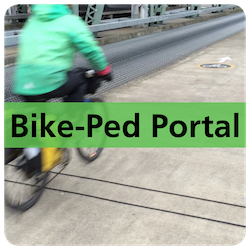 A national non-motorized count data archive, BikePed Portal provides a centralized standard count database for public agencies, researchers, educators, and other curious members of the public to view and download bicycle and pedestrian count data. It includes automated and manual counts from across the country, and supports screenline and turning movement counts.
A national non-motorized count data archive, BikePed Portal provides a centralized standard count database for public agencies, researchers, educators, and other curious members of the public to view and download bicycle and pedestrian count data. It includes automated and manual counts from across the country, and supports screenline and turning movement counts.
With the BikePed Portal we aim to:
---Provide safety researchers with a measure of exposure to collisions
---Give educators data to include cycling and walking in their curricula
---Enable local agencies to seasonally adjust estimates they gather from short-duration count sites
---Provide policymakers with basic information on cycling and walking, including performance metrics, to inform planning and funding decisions
---Allow transportation professionals to better support the public’s desire for livable communities
Our next goal is really broadening the user base and expanding the datasets available in BikePed Portal. Also, we’re really focused on integrating AADNMT calculations (Annual Average Daily Non-Motorized Traffic). Read a December 2020 interview with the team behind BikePed Portal here.
Please review this data agreement form, if this matches your project needs please reach out to bikepedportal@pdx.edu.
Exploring Data Fusion Techniques to Derive Bicycle Volumes on a Network
Learn more about Exploring Data Fusion Techniques to Derive Bicycle Volumes on a Network, led by Sirisha Kothuri of PSU.
Guide to Bicycle & Pedestrian Count Programs
Interested in understanding bicycle and pedestrian traffic in your area? This resource is for you! While there are many ways to quantify bicycling and walking, this guide focuses on bicycle and pedestrian count programs. Counting provides information on the level of intersections, paths and roadways; a dataset already available for motor vehicles, but lacking for non-motorized travelers. Agencies who show clear evidence of use are more likely to receive funding for projects. The main purpose of a bicycle and pedestrian count program is to measure bicycle and pedestrian traffic at all times in all locations on a system. To accomplish this goal, a robust and cost effective bicycle and pedestrian count program is needed. Here we summarize information on how to create or improve a bicycle and pedestrian count program. Download the Guide to Bicycle and Pedestrian Count Programs (PDF).
Pedestrian Observation and Data Collection Curriculum
Learn more about the Pedestrian Observation and Data Collection Curriculum here.
The People Behind the Research
Meet the experts behind many of the projects listed above:
- Joe Broach, Research Associate, Transportation Research and Education Center (TREC); Senior Researcher and Modeler, Metro
- Jennifer Dill, and Director of the Transportation Research and Education Center (TREC) and Professor, Urban Studies and Planning, Portland State University
- Basem Elazzabi, Senior Research Associate, Transportation Research and Education Center (TREC) at Portland State University
- Sirisha Kothuri, Senior Research Associate, Civil and Environmental Engineering, Portland State University
- Tammy Lee, Transportation Data Program Manager, Transportation Research and Education Center (TREC) at Portland State University
- Nathan McNeil, Research Associate, Urban Studies and Planning, Portland State University
Online Education and Additional Resources
Online Seminars
We have presented a variety of webinars and online seminars focused on this topic, and are always adding more. See the YouTube playlist of our online education in transportation data.
Transportation Data Equity and Ethics
We also recommend the following resources on considering questions of equity and ethics in using transportation data:
- Marcus Gaddy and Kassie Scott, Principles for Advancing Equitable Data Practice, Urban Institute, June 8, 2020
- Sharon Zanti, Matthew Katz, & Amy Hawn Nelson, “Applying a Race Equity Lens to Build Thriving Communities: Centering Racial Equity Across the Data Lifecycle,” Policy & Practice, August 1, 2020
- Sujata Gupta, “To fight discrimination, the U.S. census needs a different race question,” Science News, March 8, 2020
- Center on Poverty and Inequality, Brief: Race & Origin Questions in Context UNDERSTANDING THE 2020 CENSUS, June 6, 2019
- Urban Institute, Applying Racial Equity Awareness in Data Visualization, Sept 3, 2020


